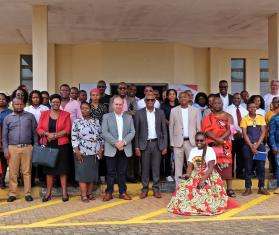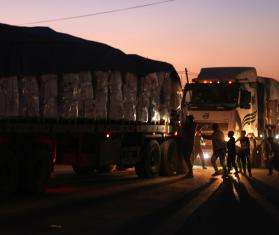Sydney/New York, July 24, 2007 – New pediatric treatment data presented by the international medical humanitarian organization Doctors Without Borders/Médecins Sans Frontières (MSF) at the 4th International AIDS Society conference in Sydney, Australia, demonstrate good clinical results but sub-optimal virological outcomes. The results confirm concerns about the effectiveness of treating children without access to appropriate and adapted pediatric AIDS drug formulations.
MSF presented data on virological, pharmacological, and adherence outcomes for a cohort of children in rural Uganda at 12 and 24 months on treatment. The probability of remaining alive and in care was good, with 91 percent and 86 percent on treatment at six months and 12 months, respectively. However, viral load results, which are a strong predictor of long-term survival, were not as encouraging. A viral load of below 400 copies was achieved in only 59 percent of children after 12 months and 33 percent after 24 months. Of children identified with a high viral load (over 1000 copies), 85 percent showed resistance to one or more of the commonly-used first-line antiretroviral drugs.
"Our treatment outcomes in children are a reflection of how difficult it has been to treat children with drugs that aren't designed for them," said Dr. Myrto Schaefer, pediatric HIV/AIDS advisor for MSF. "Because appropriate formulations have not been available for children, we've had to treat them by cutting adult tablets in two, or by giving them syrups that are hard to measure and swallow. This approximate method of dosing and administration may be what is contributing to the less-than-ideal virological outcomes we are finding."
Over a year ago, several generic manufacturers launched the first fixed-dose combination tablets for children. These three-in-one pills make dosing easier and more accurate. While the World Health Organization (WHO) has endorsed the use of these existing formulations, it still has not listed any of these products in their prequalification program. This has the practical effect that children across the developing world do not have access to these products. Because of these delays, MSF has internally validated the use of the pediatric fixed-dose combinations for use in its projects.
"The WHO has been moving far too slowly on pediatric AIDS drugs," said Karen Day, pharmacist with MSF's Campaign for Access to Essential Medicines. "It is unacceptable that now that these products finally exist, the WHO is not doing what is necessary to approve the drugs they recommend so that they become more widely available. Children have had to wait five years longer than adults for a three-in-one AIDS drug, and they shouldn't have to wait any longer."
MSF is currently treating 100,000 people living with HIV/AIDS in more than 30 countries, 7,000 of whom are children. MSF has been caring for people living with HIV /AIDS in developing countries since the mid 1990s and first began providing antiretroviral treatment in 2000 in Thailand and South Africa.



